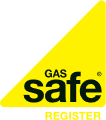Gas safety for carers
This information is intended for those who care for vulnerable people.
In the right hands gas is safe, but poorly fitted and badly maintained gas appliances or equipment can put you at risk of gas leaks, fires, explosions, and carbon monoxide poisoning. The Gas Safe Register is the official list of gas engineers who are legally allowed to work on gas appliances. Gas Safe Register can help you find a local Gas Safe registered engineer and tell you if they’re qualified for the type of work you need them to do.
Find and Check a Gas Safe Registered Engineer
Check the ID card
Only a Gas Safe registered engineer should fit, fix or service gas appliances. It is important to check the identity of the gas engineer when they arrive to carry out gas work. All Gas Safe registered engineers carry a Gas Safe ID card; you may prefer to check this card for the person that you care for. All gas work is different, and the back of the ID card tells you if they’re registered for the
Have regular servicing and maintenance
It is important that you encourage the person that you care for to get all their gas appliances checked once a year by a Gas Safe registered engineer. Annual maintenance not only helps keep the heating and hot water working properly, but it also helps keep the person you are responsible for safe. Make sure you never attempt gas work yourself – DIY on gas can be dangerous.
Look out for signs of carbon monoxide
Unsafe gas appliances can produce a highly poisonous gas called carbon monoxide (CO). CO has no taste, colour, or smell. It can make you seriously ill and can kill quickly without warning. Does the person who you are caring for have any of these symptoms?
- headaches
- nausea
- dizziness
- breathlessness
- collapse
- loss of consciousness
These are symptoms of CO poisoning and it’s best to get checked by a doctor.
Is the flame from the gas appliance yellow and lazy?
Have a look at the gas flame, for example whilst cooking. The flame should be crisp and blue. A floppy yellow or orange flame may be a sign that the appliance is not working correctly (except for fuel-effect fires that display this colour flame).
Is there soot or staining?
Dark staining around an appliance (like a gas fire) is a sign that it may not be working correctly and could be producing carbon monoxide.
Is there a build-up of condensation?
A build-up of condensation in the room where there is a gas appliance is a sign that an appliance may not be working correctly and could be producing carbon monoxide.
If you suspect a gas appliance may not be working correctly:
- Turn the appliance off and call a Gas Safe registered engineer to check the appliance.
- If you suspect carbon monoxide poisoning, seek medical help immediately.
- If you smell gas or think there might be a gas leak, turn off the gas at the meter, put out naked flames, open windows and do not operate any electrical switches.
- Call the gas emergency number for your area (available 24 hours a day, 365 days a year).
- Great Britain 0800 111 999
- Northern Ireland 0800 002 001
- Isle of Man 0808 1624 444
- Guernsey 01481 749 000
- Jersey 01534 755 555
- For LPG gas contact your supplier directly.
How else can you help?
Is there a carbon monoxide alarm in the property? If they don’t have a carbon monoxide alarm, encourage them to buy one. They cost around £20 from DIY shops, supermarkets, or their energy supplier. Get an audible alarm marked EN 50291 and with the British Standards Kitemark. Special carbon monoxide alarms are available for the hard of hearing.
Are vents or chimneys blocked to stop draughts?
Gas appliances need ventilation to work correctly, and it is important that vents are not blocked to stop draughts.
Is the person you care for renting their home?
In rental properties the landlord is legally responsible for the maintenance of the gas appliances that they provide, including pipework and flues. They must also arrange a gas safety check with a qualified Gas Safe registered engineer every year and provide proof of this annual
check by giving the tenant a copy of the Landlord’s Gas Safety Record.
Useful Downloads
-
Gas safety advice for carers


